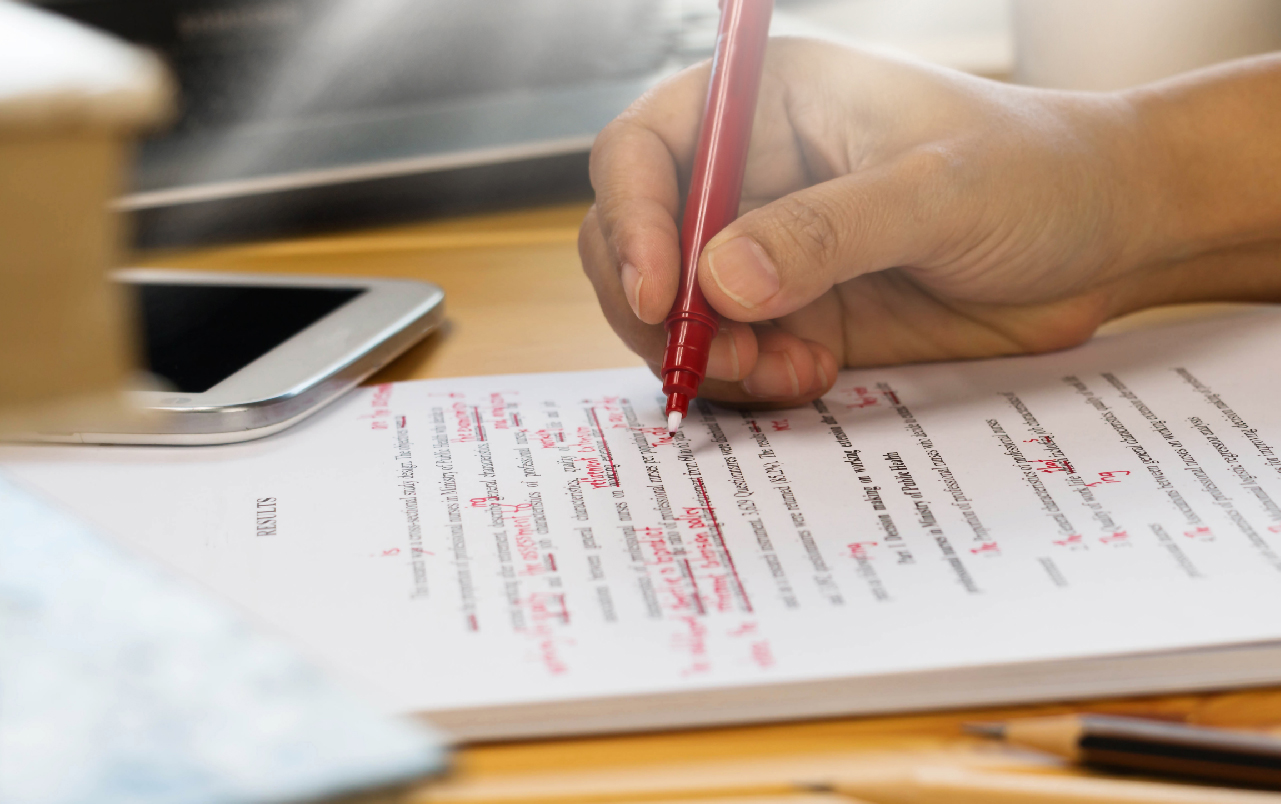The Chair of Southern Voice, Dr Debapriya Bhattacharya, has been invited by the UN Department of Economic and Social Affairs (DESA)…
This article was originally published on Medium by CSTEP.
Think Tanks do more than just research. At CSTEP, it is the coming together of science and policy practitioners, modellers, and communicators with a single mandate: bringing forth scientific evidence to improve policy to tackle developmental challenges. In this series, we look at what happens behind the scenes at a technology-policy think tank, and how each link in the chain plays a crucial role. In the first blog of the series, Devaditya Bhattacharya, Editor, CSTEP talks about how copy-editing is more than a simple grammar check at a think tank and how adding value is a key mandate of the job.
‘Editors are not passive participants. We expect them to inject real value — as integral members of the process’. Asserting this in my first appraisal meeting, my then manager (now Executive Director) redefined the contours — both linguistic and ideological — of my work at CSTEP. I had much to unlearn or at least recalibrate, about my role and others’ expectations of it. I was well versed in the 4 Cs of copyediting (clarity, coherence, consistency, and correctness), but this V — for value — was new. And the next two years revealed how each step at CSTEP provides an editor ample opportunities to add such value.
CSTEP’s writing process begins with a unique event: a ToC meeting. It is easy to be misled by the name; however, the meeting is anything but a mere discussion on the Table of Contents. Attended by the prospective authors, technical reviewers, editors, and project managers, such meetings involve a detailed discussion on what each section of a manuscript shall comprise. ‘Audience’, ‘content’, ‘flow’, ‘meaning’, ‘relevance’, and ‘value’ (not to forget the all-important ‘deadline’!) are words loudly heard by anyone within earshot of such meetings. For opinion pieces, where the scope to reshape is doubtlessly greater, a ToC meeting could resemble a veritable war room.
The subsequent phases — reviewing the first draft, copyediting, coordinating with technical reviewers, sending for approvals from the established hierarchy of approvers — might seem more conventional, even mundane. But they are definitely not. Because what we politely call ‘copyedit’ is actually a hard-fought (albeit well-intentioned) battle between the editor’s keyboard and the author’s Word doc (with ‘Track Changes’ on). Meetings will be convened later, often involving a passionate debate or two, to ensure the documents attain what both parties consider an acceptable structure — a.k.a., QC-approved! Any mild annoyance that the author might feel (at seeing their loved files so ruthlessly red-marked) generally disappears when the final output takes shape. Because both of us understand, all of this is an attempt towards that seemingly elusive goal — value addition. The ‘Hey thanks, my op-ed got published’, which we often hear after the gruelling process bears fruit, is any editor’s dream come true.
‘We do not hire copyeditors just to modify commas’ (enunciated by my manager at a previous organisation) is another maxim we live by. And our work at CSTEP involves way more than relocating truant commas. Nevertheless, punctuation marks are nothing to be trifled with — haven’t commas decided court cases and semicolons upended elections, both in India and beyond? Beyond commas, and language in general, we attempt to tame that unpredictably moody beast called ‘formatting in MS Word’. It’s an ongoing (and ridiculously confusing) process; but with helpful colleagues sharing gems like this, life definitely gets easier. Speaking of colleagues, I have witnessed that (to borrow a certain JKR’s words) ‘Help will always be given at CSTEP, to those who ask for it’. We have had non-editors pitch in to proofread (when deadlines got too critical), designers coach us on tools and styles, researchers hold talks to educate us on their work, and so much more — all we had to do was ASK. We even had the opportunity to avail ourselves of certifications and courses — to enhance our understanding of the technology-policy world — from emerging policy schools.
An editor’s work at CSTEP is versatile in itself. But, if interested, we get a chance to try our hands at much more than editing. Editors have conducted learning sessions (both formally scheduled and impromptu), anchored sessions and events (both internal and external), worked with the Communications team on diverse outputs, managed parts of the website backend, written blog articles, and handled the organisational email account. Of course, the primary task remains sacrosanct: do not miss the editing deadlines. We also get a chance, with the leads historically keeping an open-door policy, to politely barge into the higher-ups’ chambers for discussions — on improving the quality of work and efficiency of processes. And of course, how to add the greatest possible value to our work.
Why am I writing this article today, when neither the topic is topical (being absolutely unrelated to the Ladakh standoff or COVID-19) nor is my ‘work anniversary’ around the corner? The motivation behind this 700-word wall of text is more personal. It is to document our story, to serve as a reference point for a new editor in times to come — of what we are and what we aspire to be.
Adding a dash of value is our primary mandate!


